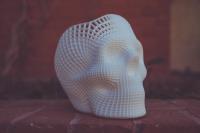 Add My Company
Add My Company
Sign In
How do you scan very large or small items?
27-02-2019

If you aren’t familiar with the world of 3D scanning, it might surprise you to know that one of the biggest influences on cost is actually object complexity rather than size. Still, you may wonder how it’s possible to scan something as big as an aircraft, or as small and intricate as an insect, affordably. Can it be done? Of course it can.
HOW 3D SCANNING WORKS
3D laser scanning is a non-contact and non-destructive technology that digitally captures the shape of physical objects using a line of laser light. The scanners create ‘point clouds’ of data, captured from the surface of the scanned object. Essentially, this process captures the exact size and shape of a physical object, making a real-world object digital. From there, you can manipulate this data in hundreds of ways to design, create, print, or even animate your digital asset.
The process of 3D scanning is very precise and is becoming more accurate each year as the technology continues to develop. The process is fast, gathering up to 750,000 points per second. But, how do you do this for huge or miniscule objects?
SCANNING LARGE OBJECTS
Because large objects are often hard to transport, the best way to scan them is often on-site, meaning the 3D scanner must be portable. The techniques used to scan large objects like aircraft, yachts, power generation equipment, or large tooling differs from smaller items. Alignment techniques and point cloud to polygon creation are different.
Often, the scanning of large objects requires multiple scanning technologies including laser trackers, long range scanners, and hand-held scanners. Compiling the data from the different tools into one model can be complex, requiring expensive hardware and advanced CAD modelling software. The processing of this data, and the time taken to scan large objects, will increase with the size.
SCANNING SMALL OBJECTS
The smallest sized object a 3D scanner can scan often depends on the scanner you use. For example, smaller scanners are limited to smaller objects, but their ability to produce tiny details is lower than larger scanners. There are full height human scanners, but they are not often equipped to deal with anything broader than normal human girth. There are more powerful scanners that can deal with tiny objects.
For example, German scientists created the DISC3D scanner which can scan tiny insects in extreme detail. Scanning objects this small is difficult, and you need to ensure you have a scanner that is capable. The 3D scanning of objects can be done in your workspace. Scanners are sometimes small enough to fit on a desk, but this will depend on your unique needs and the type of scanner that should be used to meet them.
As you can see, it isn’t a question of how small is too small, or how large is too large. The technology exists to 3D scan almost anything. It’s less a matter of “is this the right size?” and more “is this the right situation?”. If you still aren’t sure, get in touch with a 3D scanning expert for their opinion.
At Central Scanning, our range of equipment can deal with objects big and small, from tooth-sized items to an entire aircraft. Whatever you need scanned, we have the expertise to do so. To find out more about our 3D scanning services, give Central Scanning a call on 01527 558 282.
For more information on How do you scan very large or small items? talk to Central Scanning Ltd
Enquire Now
List your company on FindTheNeedle.

